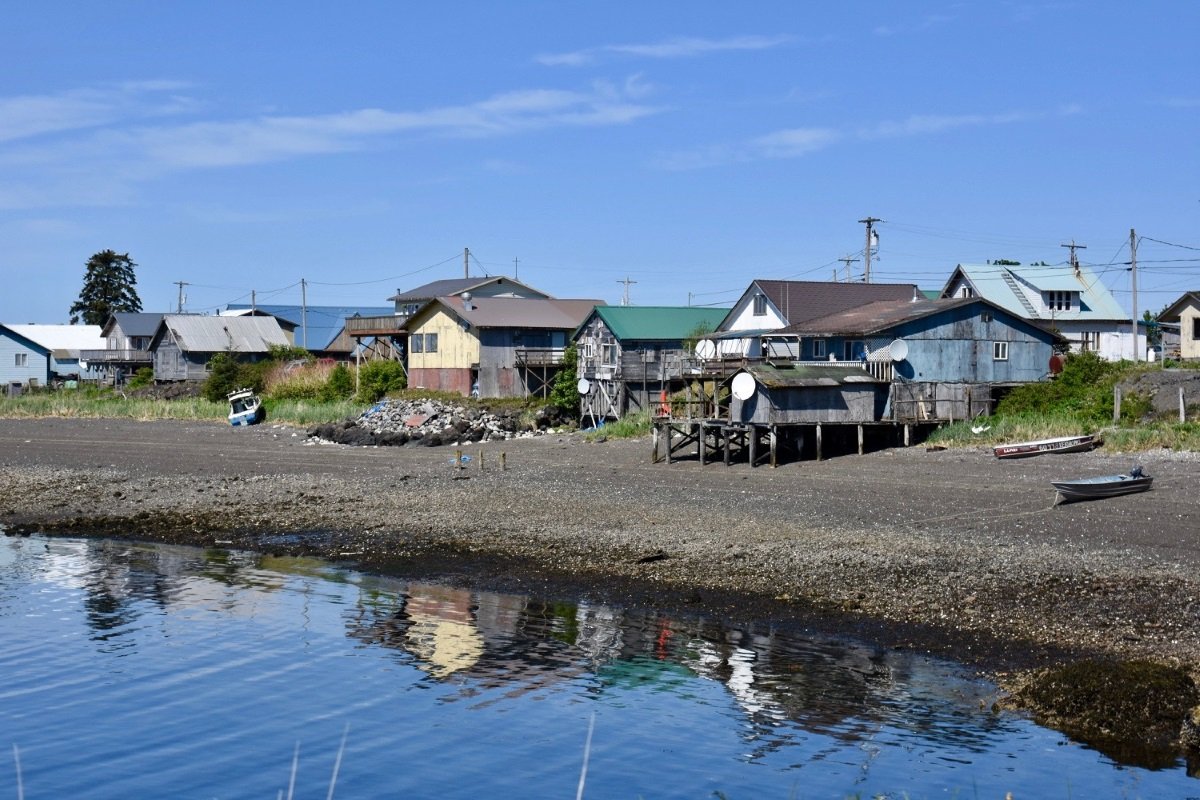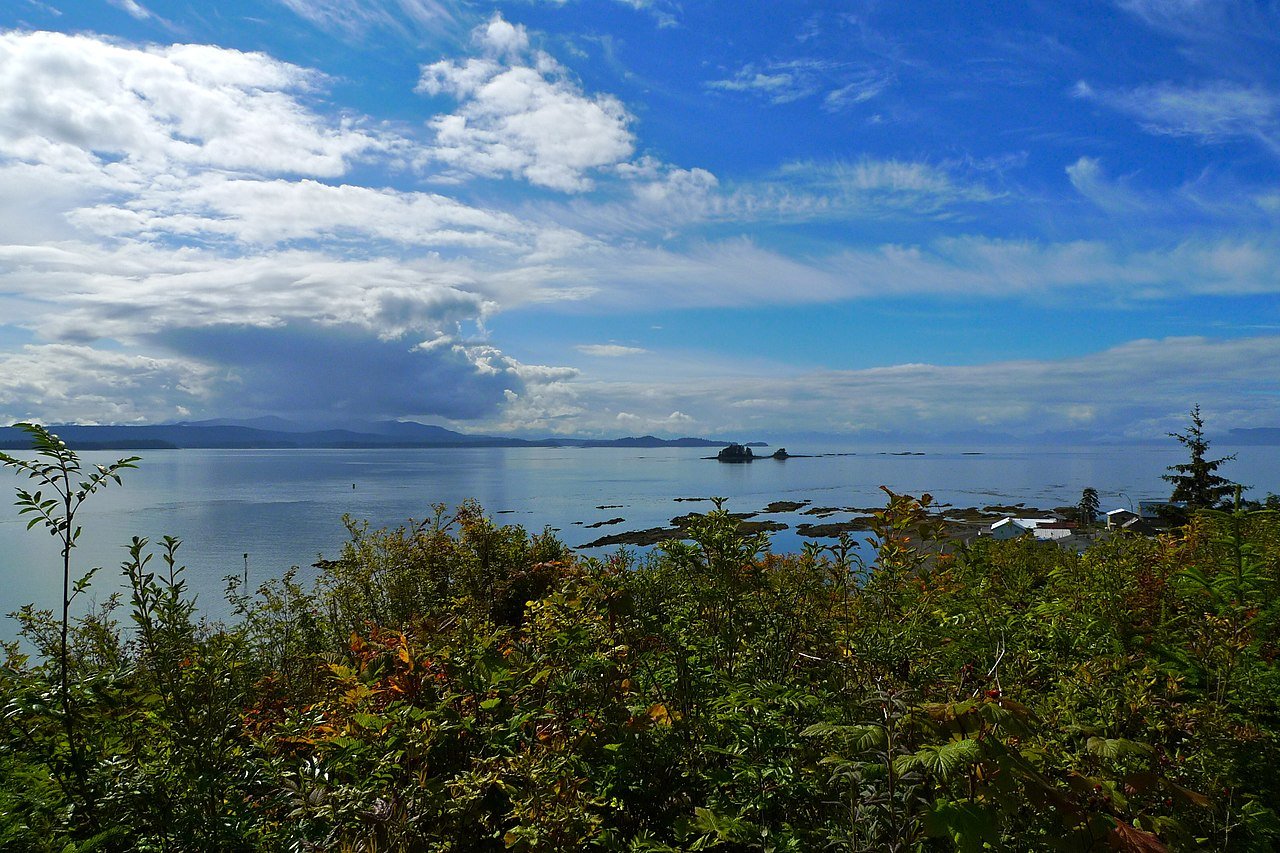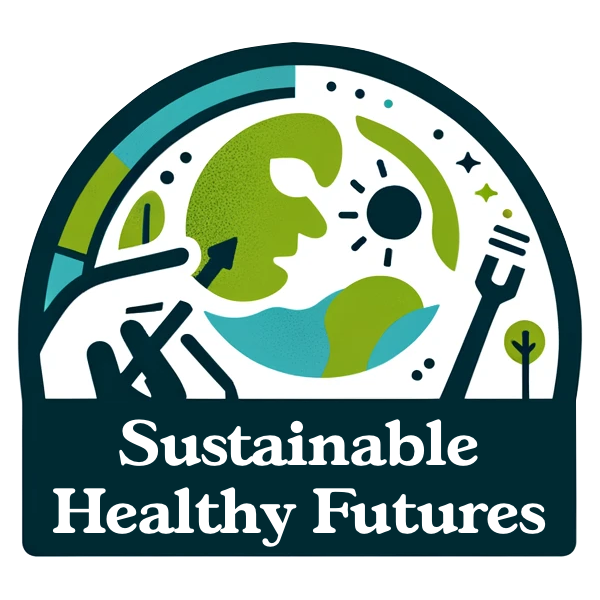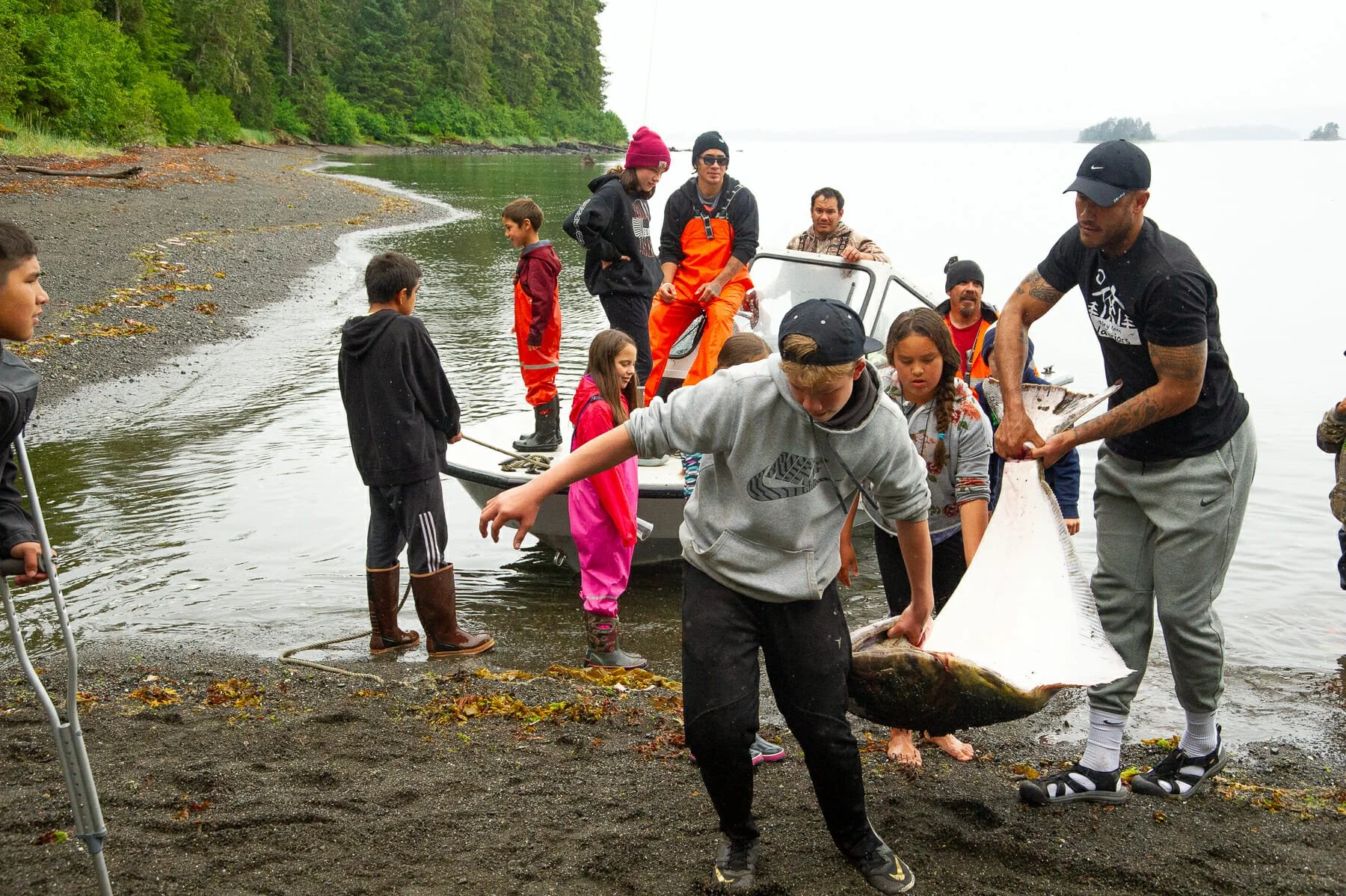
Kake Tribal Heritage Foundation
Utilizing hydroponics to improve food sovereignty in the face of climate-induced difficulties
Food in Kake
Without a road system to connect Kake to other communities, the Kake Tribal Heritage Foundation recognized that they needed to help support projects to grow food locally to increase community resilience to disruptions. They converged on the idea of a closed-loop hydroponics system to climate-proof food security for Kake in the coming decades.
Project Overview
The Kake Tribal Heritage Foundation, a 501(c)3 nonprofit organization affiliated with the Kake Tribal Corporation, has undertaken a project to enhance the food security and self-reliance of the Kake tribal community. This project will increase resilience through climate-proofing access to food in Kake, Alaska. The goal of the project is to address food insecurity that may arise from supply chain disruptions, such as the one that occurred during the COVID-19 pandemic, as well as from climate disruptions of local food sources available through traditional hunting and gathering practices. The Kake Climate Partnership, of which the Tribal Heritage Foundation is a part, preceded the food resiliency project. The climate partnership brought together tribal leaders, the foundation, and university researchers to facilitate longer-term visioning and planning for climate adaptation. An outgrowth of that partnership was the procurement of a climate resiliency grant that is allowing the tribal foundation to build food resiliency by growing green vegetables through hydroponic installations. In the summer of 2023, the foundation undertook the pilot phase of the project and demonstrated that the hydroponic systems could be reliable sources of fast-growing greens that could provide a supplemental nutritional food source during times of disruption and uncertainty. Moreover, the project provides an opportunity for business development, employment, and local economic activity that can foster greater capacity and self-reliance in a community that has suffered severe economic hardship in recent decades.

As the waters get “warmer and warmer, the level of toxicity has been rising at a high rate lately. We have to carefully watch tests that are done through one of the organizations here in town to make sure that the levels aren’t bad. So we’re not eating them during that time. That’s been kind of putting a little heartache on people.”
— Ashley Padgett
Kake is a small community of around 500-600 residents in Southeast Alaska on an island dominated by the Tongass National Forest and part of the archipelago that makes up the Alaska panhandle. The community is made up primarily of members of the “Tlingit, an indigenous people of the Pacific Northwest Coast.” The Tlingit are a matrilineal society that has evolved along the coast depending on hunting and gathering for subsistence. Primary food sources have consisted of salmon, halibut, herring, and other fish and shellfish; deer, moose, grouse, and other terrestrial species; and local plants and fungi, including several sources of berries which the residents freeze or turn into jams and sauces for year-round use.
Meanwhile, the economic and rural context in Kake is a challenge. Kake is isolated and only accessible by boat or plane. Therefore, the community relies on shipments for basic goods. The costs of shipments by air are extremely high, making it infeasible for most people and products. The weekly barge brings in larger and is more cost-effective. However, if there is a disruption in supplies, the community members have to wait at least another week to get the supplies they need. Job opportunities are scarce and seasonal. By one estimate, unemployment hovers near 80%.
Climate Impacts
Unlike arctic areas of Alaska, Kake residents are not likely to face relocation pressures. This temperate rainforest region will likely be buffered to an extent from the worst effects of climate change. However, the region is expected to face more extremes with some lengthier dry and warm seasons than the historical range, according to climate researchers involved with the Climate Partnership. Increasing variability and extremes in weather events may have negative impacts on populations of plants (e.g., berries, Labrador root, spruce tips, devil’s club), animals (e.g., salmon, halibut, herring, deer, moose, grouse), and fungi (e.g., wild mushrooms) that the people of Kake rely on for traditional foods. Some streams that have been salmon habitats historically are reaching higher temperatures that inhibit salmon passage and spawning. In some years, higher temperatures have caused clams to reach high toxicity levels, making them harmful for digestion. As the waters get “warmer and warmer, the level of toxicity has been rising at a high rate lately. We have to carefully watch tests that are done through one of the organizations here in town to make sure that the levels aren’t bad. So we’re not eating them during that time. That’s been kind of putting a little heartache on people.” according to Ashley Padgett, a member of the board of the Kake Tribal Heritage Foundation. Sometimes, berry-producing plants underproduce in dry years or become overly saturated in overly wet years, leading to moldy berries. These climate patterns have caused added stressors to the traditional food system for the people of Kake. According to Padgett, “we’ve noticed a dramatic change over the past 15 years—it’s definitely a lot different than when I was my kids’ age.”
Beyond these impacts on traditional food sources, Kake also depends on shipping (either by barge or plane, although plane fees are quite high) for imported food supplies. There are no roads connecting Kake to other communities, which makes the community especially vulnerable to disruptions in global food supplies or shipping services. During the COVID-19 pandemic, the Kake grocery store was frequently out of, or offering very limited supplies of, both shelf-stable and fresh food supplies. As one of the directors of the Kake Tribal Heritage Foundation noted, “During the pandemic, the biggest issue with our small rural community was not having something as simple as a head of lettuce on the shelf for weeks. There was so much backup then, by the time that it got here, it was completely ruined.” This disruption called attention to the level of reliance the community had built over time on global food supplies and shipping systems. Global impacts from climate change may likewise interrupt shipping supply chains and cause intermittent shortages at grocery stores. “We didn’t realize how unsustainable we were until the pandemic happened.”
Project Description
Without a road system to connect Kake to other communities, the Kake Tribal Heritage Foundation recognized that they needed to help support projects to grow food locally to increase community resilience to disruptions. They converged on the idea of a closed-loop hydroponics system to climate-proof food security for Kake in the coming decades. Funding from a Climate Resiliency grant will support the creation of a climate risk assessment and launch a pilot initiative for growing green vegetables locally using the hydroponic system. The project is part of a larger and longer-term effort to enhance food security and nutrition security in Southeast Alaska and Kake specifically. It also attempts to create local paid internships, job training, and longer-term employment opportunities in Kake, where unemployment remains persistently high.
The Climate Resiliency grant is funded by the First Nations Development Institute operates out of Longmont, Colorado. The institute provides grants to indigenous communities to build capacity through technical assistance, training, and policy advocacy. The grant provided funding for the acquisition of the hydroponic mechanical system as well as training for installing, operating, and maintaining the system. It took quite a few months to have the equipment purchased and shipped into Kake. Also, community leaders who were involved in implementing the project traveled to other communities in a bid to learn how their hydroponics systems operated. In the summer of 2023, the small staff of the Kake Tribal Heritage Foundation put the system together and began growing their first crops.
During the pilot phase of the project, which is ongoing, the foundation hopes to demonstrate the feasibility of the hydroponic system, build community awareness, create opportunities for education and employment, and support healthier diets in the community. In terms of project feasibility, the foundation wanted to make sure that the system could be effective in growing vegetables at a rate that could support healthier diets and that it could be done cost-efficiently. One of the concerns about the system and its feasibility was whether the electricity costs would be too high to make the project worth it. As they completed the first season, the electricity bills had minimal change, which gave them hope that the project would be cost-effective. They also learned that the vegetables grew quickly and could be harvested in a much shorter time to maturity than conventional growing. Also, it has the potential to be used year-round, depending on where they ultimately develop the full build-out of the system. From this initial phase, the foundation leadership feels that the project has a lot of potential for long-term feasibility and scaling up.
Although the project is in the pilot phase, already the foundation members are seeing some progress in capturing people’s attention and gaining public support. Early on, some community members were skeptical of the project and felt it was “too artificial.” This was a big change in a community where “everything’s completely natural; we eat what grows out of the ground or what we fish or pick the berries or deer or moose—that’s definitely how we live around here.” When people “see something that grows something in a week…it’s shocking.” As the project progressed, they had more and more community members stop by, ask questions, show interest, and increasingly express support for the foundation's efforts to find ways to support food security and community health.
Employment
In terms of healthier diets, the project was successful in its first season of growing greens that they could distribute to community members. In the first phase, they delivered greens to community elders through the senior center and via door-to-door delivery. This generated a lot of excitement in the community. The project is also partnering with the Organized Village of Kake, the tribal governing body, which has a greenhouse program. They’ve collaborated to share information, ideas, and internship a program that supports youth training, education, and employment. They held a “healthy potluck” where they combined the produce from the two systems as they worked together to see which routes or combinations of routes they could take to support food security.
Structural and Historical Harms
In terms of connections to climate change and structural harm, our interviewees noted that some of the connections are indirect. The foundation leaders see the project as directly linked to long-term climate change adaptation goals. As the community faces more disruptions and impacts on local food sources, they will need to improve self-reliance and self-sustainability. However, they have to educate community members about this connection and about the risks of climate change in the community, which are much different than other areas of Alaska where glacial melt and retreat provide strong visible evidence of climate change impacts. Part of the goal of this project, according to Ashley, is to “bring it to the surface and let everybody know and educate them as much as we are able.”
Changing the Story
The hydroponics project contradicts the Native Alaskan story of living a subsistence lifestyle, which is a culturally important way of living, honoring elders, and passing on skills to children. However, the hydroponics program also dovetails other aspects of that cultural story, which is a story of self-reliance, self-sufficiency, and self-determination, which are also culturally important attributes. By taking food security into their own hands, Kake is taking back an aspect of self-reliance that the cash economy had undermined by creating a dependency on the weekly barge to get access to food. Kake’s economic development plan from 2013 included the idea of “community economic sovereignty,” which seeks to increase opportunities for community members to gain access to employment in the cash economy while also retaining their Tlingit culture and identity, which includes traditional foods and subsistence. The hydroponics project fits neatly within this Indigenous planning perspective on economic and community well-being as it offers opportunities for both economic and food sovereignty to be within reach.

